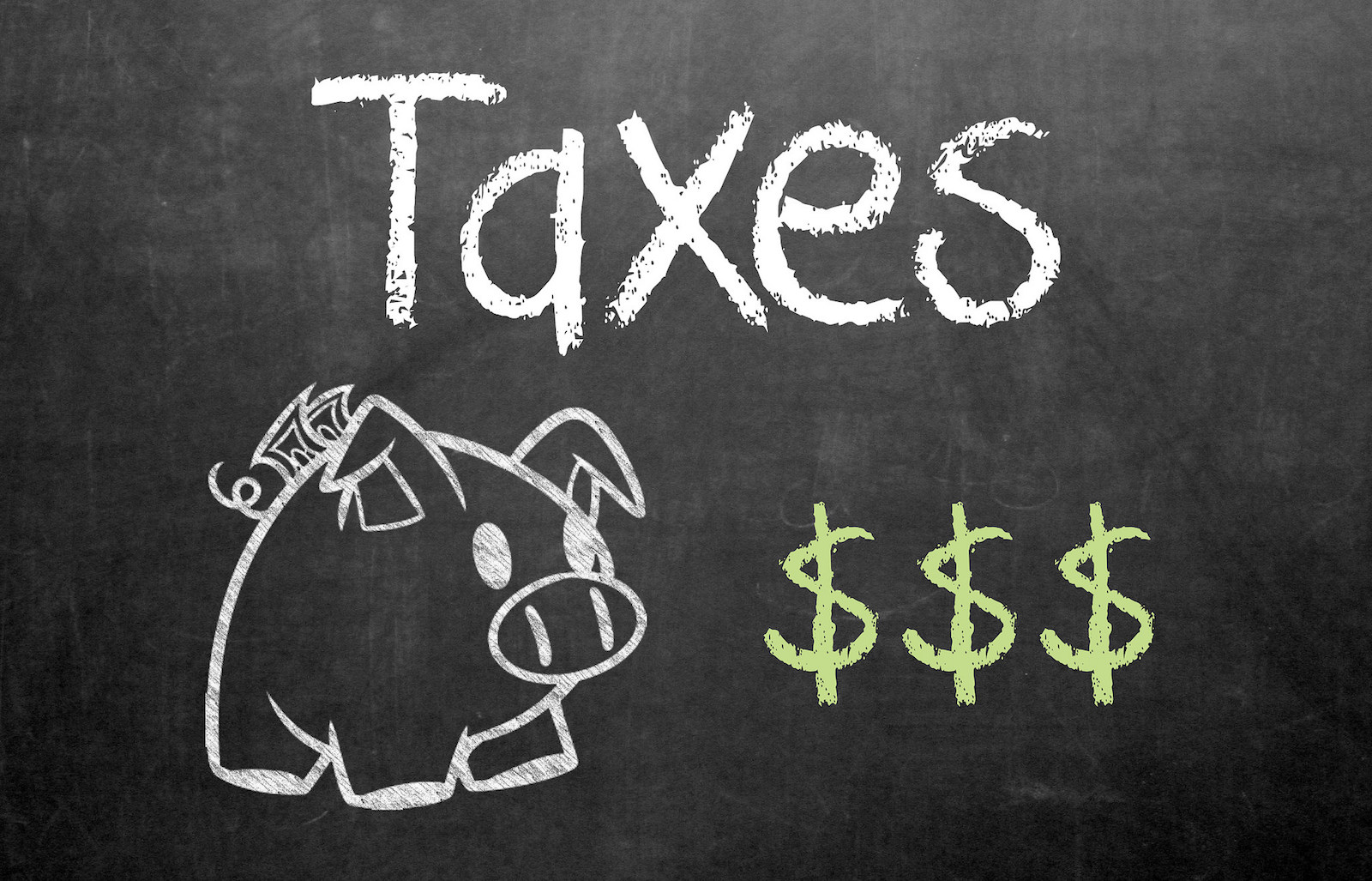The Local newsletter is your free, daily guide to life in Colorado. For locals, by locals.
Editor’s Note 11/16/2017: The House voted 227-205, almost along party lines, to pass Republicans’ Tax Cuts and Jobs Act on Thursday. Every Colorado Republican voted in favor of the nearly $1.5 trillion tax overhaul. The Senate Republicans’ tax bill is still in committee.
Although there are differences in the details, the House and Senate Republican tax plans have two common themes: They benefit corporations and the very rich over the middle class and working poor—and they try to hide the extent of that favoritism. “The similarities outweigh the differences,” says Robert Greenstein, president of the Center on Budget and Policy Priorities (CBPP), who had a phone call with reporters earlier this month.

The House plans to vote on the Tax Cuts and Jobs Act Thursday, and Republicans say it will provide more jobs, fairer taxes, and bigger paychecks. But the plan hands out most of its tax cuts to the wealthiest one percent of Americans—and actually raises taxes for about 45 percent of all middle-class families over the next decade, according to a new analysis by the New York Times.
To pay for its extensive perks for the wealthy, the House bill adds $1.5 trillion to the national deficit over 10 years, according to the Institute on Taxation and Economic Policy (ITEP). It also cuts or caps popular middle-class tax deductions for homeowners, families, and students, and intentionally excludes millions of low-income children from modest tax credits.
Senate Republicans said Tuesday that all tax cuts in their bill to help individual taxpayers will expire at the end of 2025, while a hefty cut in the corporate tax rate will be permanent. The Senate bill also includes a repeal of the ObamaCare mandate to purchase health insurance, which would cause premiums to rise and 13 million people to lose health insurance by 2027, according to the Congressional Budget Office (CBO).
How the Rich Get Richer
Although the House bill retains the highest income tax rate of 39.6 percent for the wealthiest earners, it raises the income threshold to $1 million before that rate kicks in. The Senate plan, released Thursday, simply lowers the top rate to 38.5 percent.
But income adjustments are just window dressings—the real benefits for the wealthiest one percent come via investments, according to the CBPP. Key provisions in both bills reduce the corporate tax rate from 35 percent to 20 percent. “The benefit of that cut flows overwhelmingly to high income people,” said CBPP Director of Federal Tax Policy Chuck Marr. “One third of it goes just to the top one percent of people.”
Both plans also create special provisions for “pass-through” income that is earned by a business but reported on an owner’s personal income tax returns. About 95 percent of businesses are pass-through companies, reports the Brookings Institute.

The House and Senate bills also double the estate tax exemption, so the wealthiest .02 percent of households (including about 60 estates in Colorado) enjoy a tax cut of up to $4.4 million each, Marr says. That’s about the same cost as 1,100 Pell Grants to help low-income students afford college, according to CBPP.
The Fine Print (Pay Attention, Middle Classers)
In the House bill, Republicans create a two-part plan that cloaks how much it helps the wealthiest one percent. Over the next 10 years, many tax cuts that help the middle class in 2018 will phase out, while the perks for the very rich become more generous, reports the ITEP. The Senate bill uses similar tactics.
In Colorado, about 31 percent of the House bill’s tax cuts go to the richest one percent in 2018, and 9 percent go to middle income earners, according to ITEP’s state-by-state analysis. That’s a 3 to 1 ratio between the share of tax cuts awarded to the very rich and those given to middle earners.
By 2027, the gap widens: The wealthiest Coloradans now get 46 percent of tax cuts and the share of benefits for middle income earners drops to 5 percent—a 9 to 1 ratio. The average tax cut for Colorado’s top one percent in 2027? It’s $62,240. For a middle earner, it’s $310. Meanwhile, the poorest earners in Colorado get two percent of the tax cuts in 2018, and one percent in 2027. Their average tax cut: $90.
In case you think the larger tax cuts for very rich are simply in proportion with the greater amounts of money they earn, think again, advises ITEP. “That is not what the numbers show,” the organization states. According to ITEP data, the tax cuts for Colorado’s wealthiest one percent are about 3 percent of their income in both 2018 and 2027. The tax cuts for middle earners, however, represent 1.4 percent of their income in 2018 and plunge to 0.4 percent in 2027. The tax cuts for Colorado’s working poor are about one percent of their income in 2018, and 0.4 percent in 2027.

Low and Moderate-Income Earners Lose Ground
The Republican plans eliminate or cap many existing tax benefits for working families. Taxpayers can either claim a standard deduction (currently $12,700 for couples) or itemize popular middle-class deductions like mortgage interest, state and local taxes, medical expenses, and student loan interest.
In Colorado, with higher-than-average home prices, a third of taxpayers claimed itemized deductions in 2015, averaging $25,500 per claim, reports the Pew Charitable Trusts. Coloradans deducted an average $9,600 in mortgage interest, $9,000 in state and local taxes, $10,300 in medical expenses, and $1,100 in student loan interest on their 2015 returns.
The House bill caps mortgage interest deductions, eliminates state and local taxes (except property taxes), and repeals deductions for medical expenses and student loan interest. The Senate bill leaves mortgage interest, medical expenses and student loan interest deduction alone, but repeals the whole deduction for state and local taxes.
Families with less complicated taxes fare better under the Republican bills, which roughly double the standard deduction to $24,000 for couples, and raise the child tax credit from $1,000 to $1,600 per child in the House and to $2000 in the Senate. The Senate bill eliminates all individual tax cuts—including the higher standard deduction and child tax credits—by 2025.
Both plans eliminate personal exemptions claimed by many Americans of about $4,000 for each taxpayer, spouse, and dependent child. For families of three or more that previously took the standard deduction, the loss of personal exemptions either negates any bonus from the higher standard deduction and child credits—or creates a loss of tax benefits. Large families with multiple children and those who itemize deductions lose even more.
Writing Out Low-Income Children
Republicans call the child credits a signature benefit for working families, but one in three children in low-income families are partly or completely excluded from the benefit, reports CBPP. The House bill leaves out 12 percent of Colorado children and partially excludes another 19 percent—about 350,000 children in Colorado and 23 million nationwide.
Adding to the inequality, the Senate bill extends the credit to families making up to $1 million. Under that plan, a single mother with two children working full-time at minimum wage gets a credit of $75. A family of four making $1 million gets an increase of $3,300.
Republicans will have to reconcile many differences between their tax plans to pass a bill by year’s end. But first they’ll have to reconcile with voters why they’re handing massive tax cuts to the rich and making token gestures to everyone else.








